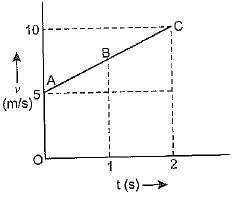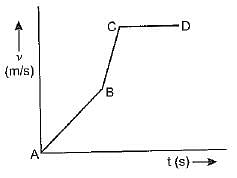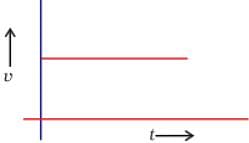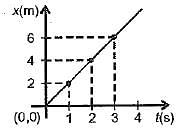Class 9 Exam > Class 9 Tests > Science Class 9 > MCQ: Velocity-Time Graphs - Class 9 MCQ
MCQ: Velocity-Time Graphs - Class 9 MCQ
Test Description
10 Questions MCQ Test Science Class 9 - MCQ: Velocity-Time Graphs
MCQ: Velocity-Time Graphs for Class 9 2025 is part of Science Class 9 preparation. The MCQ: Velocity-Time Graphs questions and answers have been
prepared according to the Class 9 exam syllabus.The MCQ: Velocity-Time Graphs MCQs are made for Class 9 2025 Exam. Find important
definitions, questions, notes, meanings, examples, exercises, MCQs and online tests for MCQ: Velocity-Time Graphs below.
Solutions of MCQ: Velocity-Time Graphs questions in English are available as part of our Science Class 9 for Class 9 & MCQ: Velocity-Time Graphs solutions in
Hindi for Science Class 9 course. Download more important topics, notes, lectures and mock
test series for Class 9 Exam by signing up for free. Attempt MCQ: Velocity-Time Graphs | 10 questions in 10 minutes | Mock test for Class 9 preparation | Free important questions MCQ to study Science Class 9 for Class 9 Exam | Download free PDF with solutions
MCQ: Velocity-Time Graphs - Question 1
The area enclosed by velocity-time graph and the time axis will be equal to the magnitude of
Detailed Solution for MCQ: Velocity-Time Graphs - Question 1
MCQ: Velocity-Time Graphs - Question 2
The velocity time graph of a moving particle is shown in Figure, The acceleration of the particle is


Detailed Solution for MCQ: Velocity-Time Graphs - Question 2
MCQ: Velocity-Time Graphs - Question 3
The velocity time (v - t) graph of a moving particle is shown in Figure. The acceleration is maximum for segment


Detailed Solution for MCQ: Velocity-Time Graphs - Question 3
MCQ: Velocity-Time Graphs - Question 4
From the given v - t graph, it can be inferred that the object is

Detailed Solution for MCQ: Velocity-Time Graphs - Question 4
Detailed Solution for MCQ: Velocity-Time Graphs - Question 5
MCQ: Velocity-Time Graphs - Question 6
If the velocity of a body is reducing, it is said to have
Detailed Solution for MCQ: Velocity-Time Graphs - Question 6
MCQ: Velocity-Time Graphs - Question 7
In a velocity-time graph, which variable is plotted on the Y-axis?
Detailed Solution for MCQ: Velocity-Time Graphs - Question 7
MCQ: Velocity-Time Graphs - Question 8
The area under a velocity-time graph is represented by the unit:
Detailed Solution for MCQ: Velocity-Time Graphs - Question 8
Detailed Solution for MCQ: Velocity-Time Graphs - Question 9
MCQ: Velocity-Time Graphs - Question 10
The area under the velocity-time graph gives the value of ......... .
Detailed Solution for MCQ: Velocity-Time Graphs - Question 10
|
88 videos|369 docs|67 tests
|
Information about MCQ: Velocity-Time Graphs Page
In this test you can find the Exam questions for MCQ: Velocity-Time Graphs solved & explained in the simplest way possible.
Besides giving Questions and answers for MCQ: Velocity-Time Graphs, EduRev gives you an ample number of Online tests for practice



















